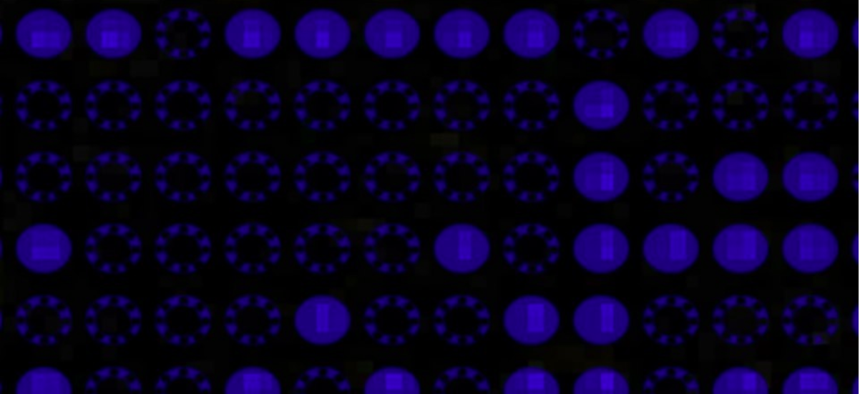The Mysterious Printer Code That May Have Led the FBI to the Alleged NSA Leaker
Many color printers embed grids of dots that allow law enforcement to track every document they output.
Across the computer security world yesterday, heads were shaking.
The FBI filed a criminal complaint against Reality Winner, an NSA contractor, who the agency alleges stole classified documents and shared them with an “online news outlet” believed to be The Intercept. Because the documents in question appear to have been printed, some security experts have been wondering if a mysterious code used by some printers is to blame for Winner’s capture. That code is an almost-invisible grid of dots that some color printers ink into every document they print.
The complaint also details how agents say they tracked the leak back to Winner. The news org contacted the National Security Agency and said they were “in possession of what they believed to be a classified document.” The news organization then sent that document to the NSA, presumably for verification. “The U.S. Government Agency examined the document shared by the News Outlet and determined the pages of the intelligence reporting appeared to be folded and/or creased, suggesting they had been printed and hand-carried out of a secured space,” the complaint continues.
From there, the agents say that they simply looked to see who had printed the document—six people had—and then discovered that one of them, Winner, had been in contact with the media company in question from her work computer (although on an unrelated topic).
When FBI agents showed up at her house, they say she confessed to “removing the classified intelligence reporting from her office space, retaining it, and mailing it from Augusta, Georgia, to the News Outlet.” She faces up to 10 years in prison.
Given what is in the public record from the FBI complaint, Winner was almost certain to get caught, and some have argued that The Intercept could not have prevented that. Obviously, the NSA monitors and records who prints what documents. There’s an audit trail there, which one imagines an NSA contractor would know.
That’s why many in the computer security have deemed the way the leak was made and handled to be a terrible example of “operational security,” or as you’ll see it relentlessly abbreviated, “opsec.”
The Intercept released a statement today, however, reminding people not to take the FBI’s complaint as fact.
“While the FBI’s allegations against Winner have been made public through the release of an affidavit and search warrant, which were unsealed at the government’s request, it is important to keep in mind that these documents contain unproven assertions and speculation designed to serve the government’s agenda and as such warrant skepticism,” they wrote. “Winner faces allegations that have not been proven. The same is true of the FBI’s claims about how it came to arrest Winner.”
If Winner wasn’t found the way the complaint claims, the mysterious dot code is one other way the FBI could have found her, as the research blog Errata Security spelled out in detail.
In fact, the document that The Intercept published contains these dots, and the code spells out a date—May 9—that matches the FBI affidavit’s account of Winner’s printing. It also notes a serial number, which the NSA could obviously match back up to a machine in their offices.
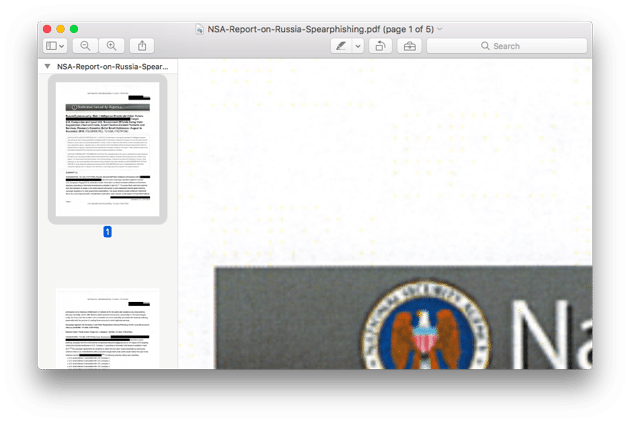
Let’s invert the colors.

And then crank up the brightness of the dots.
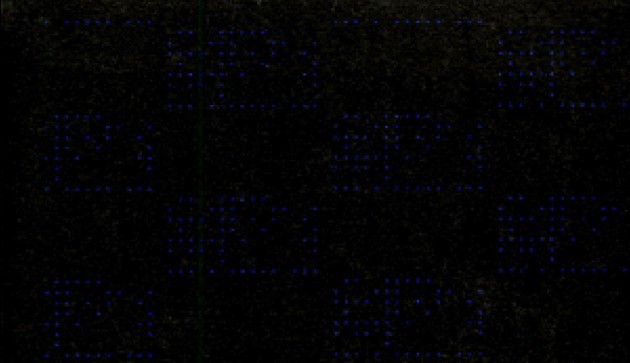
As you can probably see now, the dots are printed in a repeating rectangular pattern. They’re a code. And the Electronic Frontier Foundation cracked it some years ago, at least for Xerox printers.
Let’s look at the rectangular code up close.
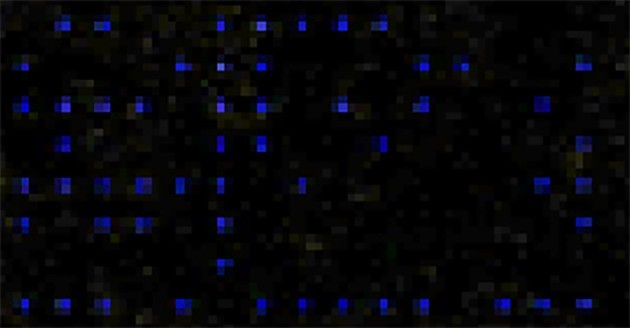
Errata Security says that the pattern was flipped upside down, so let’s flip it.
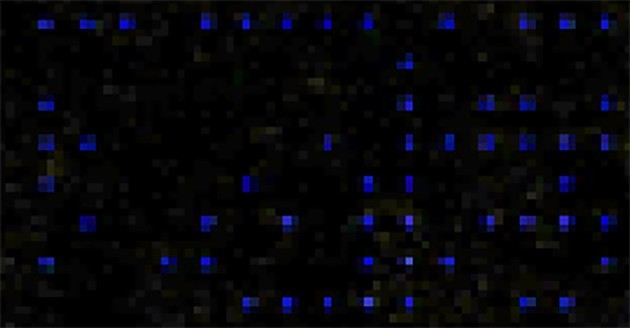
Then they used the EFF decoder, which I’ve combined with the original image here, so you can see the pattern more easily.
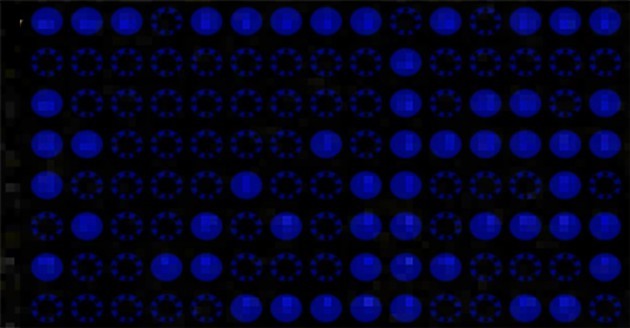
Run through EFF’s parser, Errata Security found that it output a time of 6:20, a date of May 9, and a couple of possible serial numbers. As Errata Security notes, “The NSA almost certainly has a record of who used the printer at that time.” If they didn’t already have Winner in some other way, this would probably have sealed her capture.
As one might expect, the EFF has some strong opinions about these dots, and their inclusion in the firmware that runs color laser printers. They’ve been tracking the use of these dots for a decade.
“In a purported effort to identify counterfeiters the U.S. government has succeeded in persuading some color laser printer manufacturers to encode each page with identifying information,” they write.
The idea was that color laser printers might be (or become) so good that anyone could just print money. So, manufacturers were persuaded to add this countermeasure into the software that’s baked into some printers. When someone prints in color on one of these machines, the printer does everything normally, but also adds this nearly invisible identifying stamp. (If they print in black and white, though, there are no dots.)
According to a research team at the Illinois Institute of Technology that worked on ways to counteract the dot-code, some printer manufacturers don’t even acknowledge that they exist or provide any information about how they work. “It’s a trivial way of tracking,” said Louis McHugh, one of the IIT researchers. “There’s nothing high-tech about it.”
But the dots are tracking documents, and the people who print them, nonetheless.
Did these dots play a role in Reality Winner’s investigation? We don’t know, but if you’re planning on leaking some classified documents by printing them through a color printer, you may want to rethink your plan.


